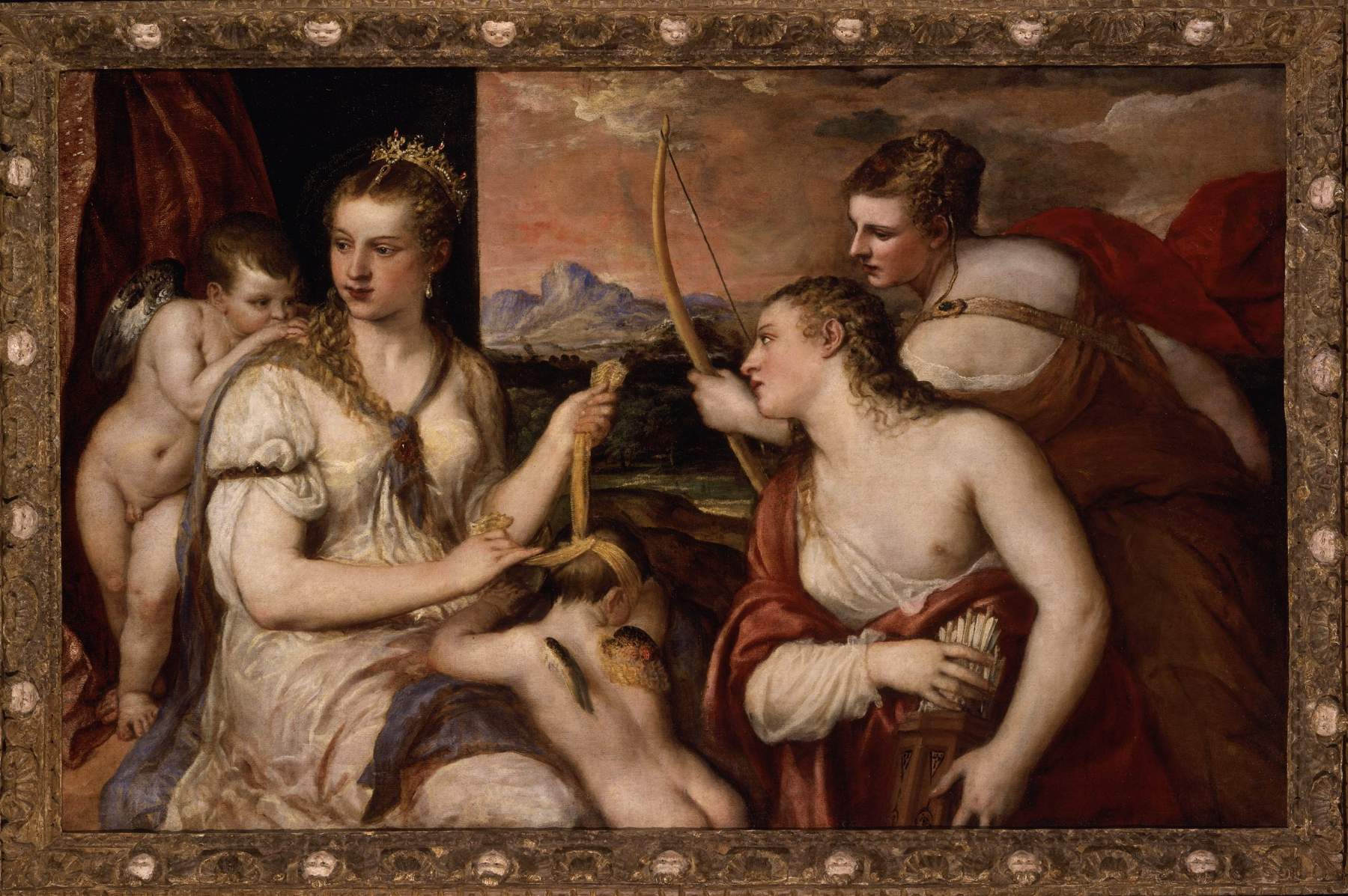From June 22 to Sept. 5, 2021, the myth of Venus will be revived in Mantua with the exhibition of Tiziano Vecellio ’s (Pieve di Cadore, c. 1490 - Venice, 1576) masterpiece Venus Binding Love, on loan from the Galleria Borghese in Rome.
Accompanying the exhibition of this masterpiece will be an articulated program on the theme of the Venus myth, with performance and artistic moments in theExedra of Palazzo Te, redesigned with new furnishings to better accommodate the public. The exhibition and program are part of Palazzo Te’s 2021 initiatives, which dedicates the interior year to the goddess of beauty.
The painting is first mentioned in 1613, in the poem by Scipione Francucci, dedicated to the collection of Scipione Borghese, cardinal nephew for eight years, a collector who was, to say the least, passionate about ancient and modern paintings and sculptures. Francucci describes the subject as Venus blindfolding Love while listing the comprimarios: another cupid and the two nymphs Dori and Armilla, one with arrows and the other with a bow. The scene has always been difficult to interpret, so much so that it acquired different titles in later inventories of the villa, where in the early 1620s Antoon van Dyck also saw it, as evidenced by a drawing in the Italian sketchbook, now in the British Museum.
In the twentieth century more complex interpretations have been based on finding literary sources; Hans Tietze proposed Apuleius’s Metamorphoses, in which Venus punishes Cupid for falling in love with Psyche by commandeering his weapons. Erwin Panofsky formulated a neo-Platonic interpretation, identifying the two cupids as Eros and Anteros, that is, passionate love and divine love, which is not blind but able to contemplate true Love.
Subsequent readings have partially undermined these interpretations, for by carefully observing the expressions of the characters, it actually appears that the two women are about to hand over their weapons to Cupid, rather than having taken them from him; the able-bodied Love, leaning on his mother’s shoulder, appears almost worried, rather than confident of his superiority to his blindfolded brother. Thus, it cannot be ruled out that the scene representsCupid’s Education: blind Love is about to perform his first exploits, striking mortals with his arrows and casually scattering falling in love and passion.
The painting is dated between 1560 and 1565, in the artist’s extreme years. The image, crumbling and dreamy, is masterfully constructed: at the center of the painting is none of the protagonists of the scene, but an opening to a sunset landscape. In a sophisticated chromatic arrangement, pink and blue are found on the small wings of the blindfolded Cupid, and on one side in the blue of Venus’s drapery, opposed to the crimson red of the handmaiden with arrows. The whites of the robes and complexions are traversed by light, and delicate transitions to colored shadows help to blur the contours of the figures, entrusted to the viewer’s eye and its ability to grasp them.
For all information you can visit the official website of Palazzo Te.
 |
| Mantua, Titian masterpiece arrives at Palazzo Te from the Galleria Borghese |
Warning: the translation into English of the original Italian article was created using automatic tools. We undertake to review all articles, but we do not guarantee the total absence of inaccuracies in the translation due to the program. You can find the original by clicking on the ITA button. If you find any mistake,please contact us.